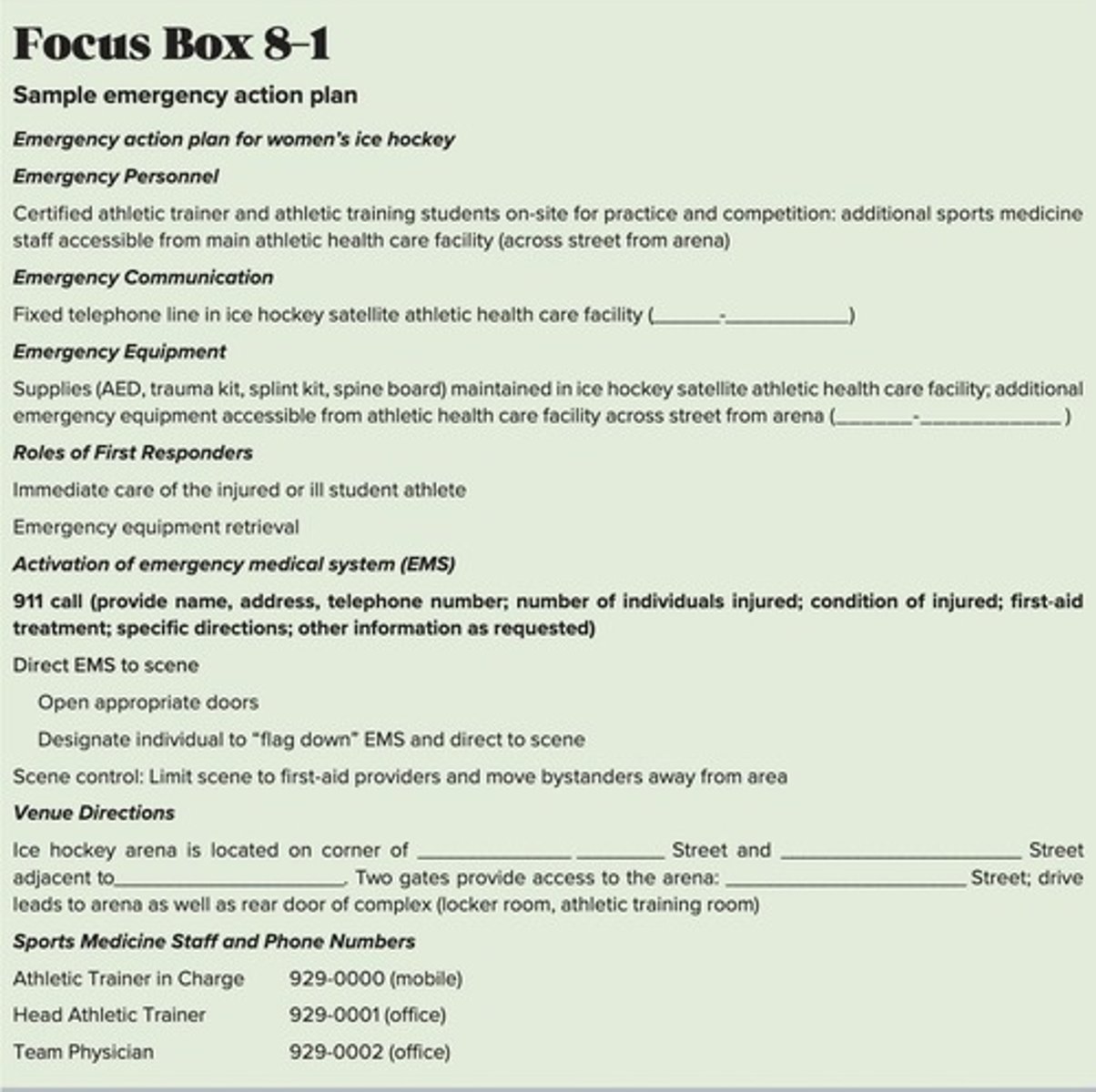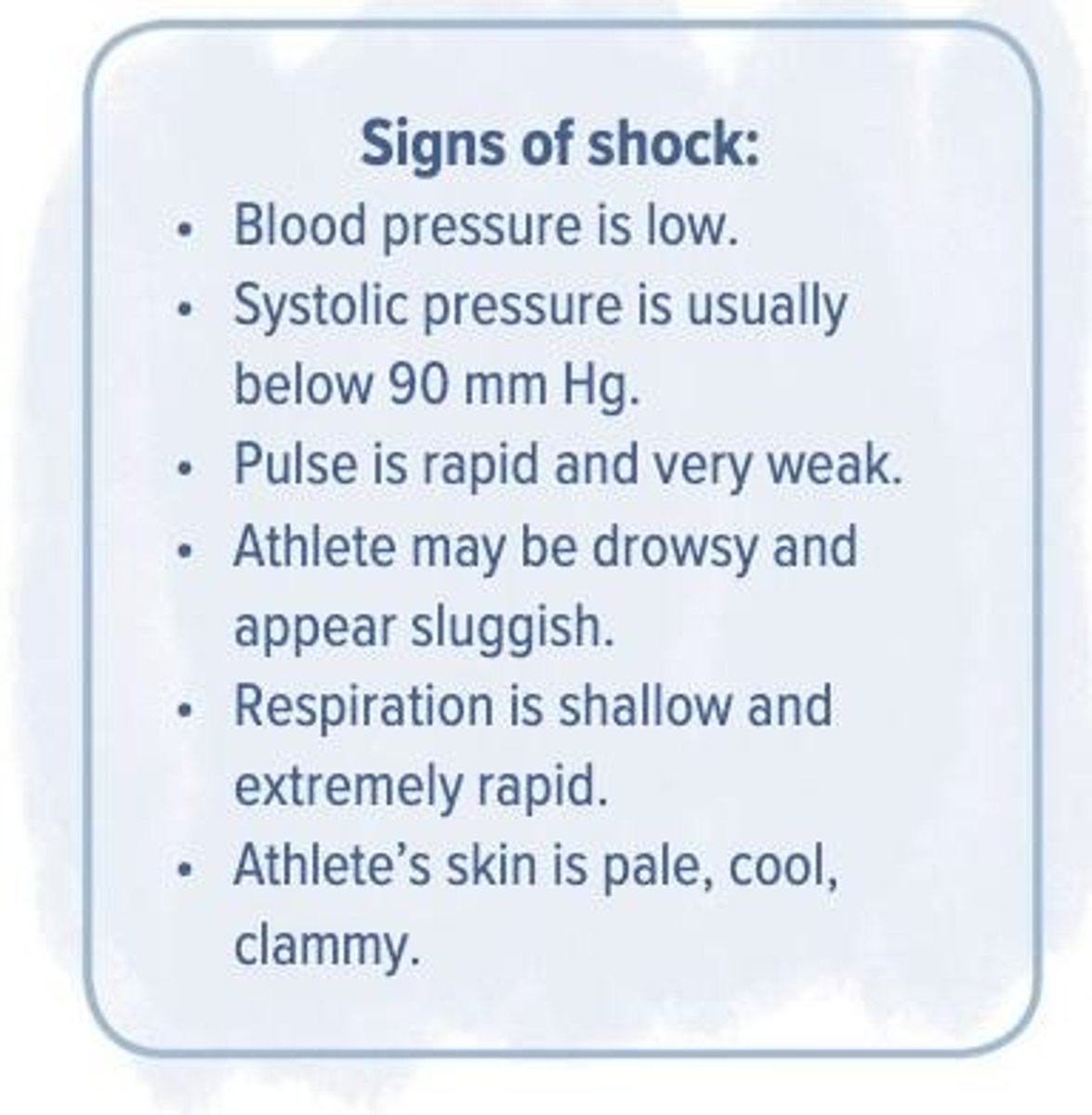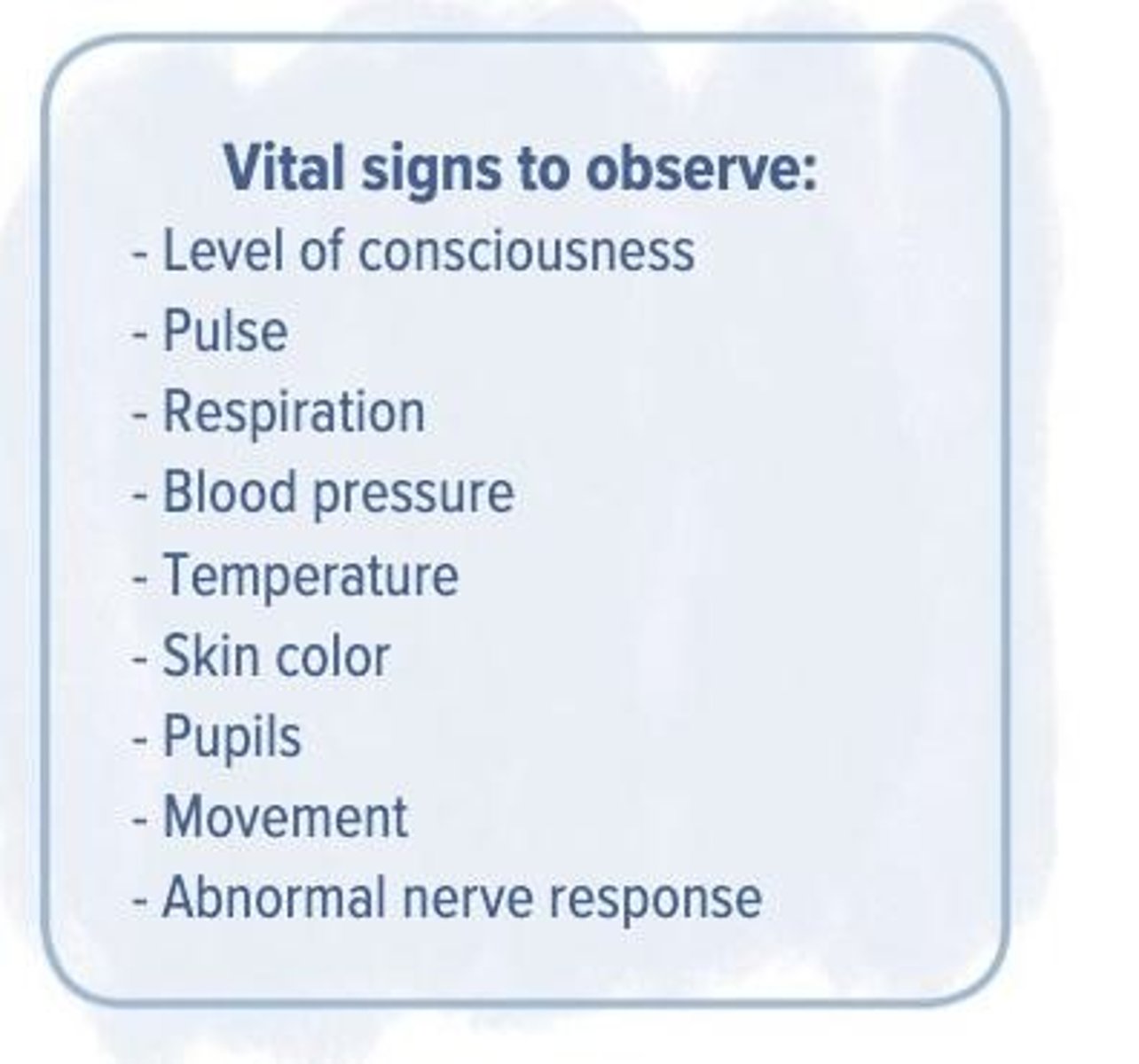Emergency Injury Management in Sports Medicine
1/62
There's no tags or description
Looks like no tags are added yet.
Name | Mastery | Learn | Test | Matching | Spaced |
|---|
No study sessions yet.
63 Terms
Emergency Action Plan
Prearranged plan for managing sports injuries.

Primary Survey
Initial assessment prioritizing life-threatening injuries.
Secondary Survey
Assessment for non-life-threatening injuries post stabilization.
POLICE
Protocol for managing acute injuries: Protect, Optimal Loading, Ice, Compression, Elevation.
Concussion
Brain injury requiring immediate assessment and management.
Cardiovascular Function
Essential for maintaining life during emergencies.
Central Nervous System Function
Critical for overall body function and survival.
Emergency Equipment
Necessary tools for injury management at sports venues.
Informed Consent
Permission obtained before treating a minor athlete.
Implied Consent
Assumed consent in life-threatening situations without paperwork.
Emergency Notification
Procedure for informing relevant parties during emergencies.
Cooperation Among Professionals
Teamwork essential for effective emergency response.
Emergency Phone Call
Information needed when contacting emergency services.
Access to Emergency Equipment
Ensures readiness for injury management during events.
Moving Techniques
Methods to transport injured athletes safely.
Emergency Splinting
Splinting suspected fractures before moving the injured.
Lifesaving Steps
Initial actions that may prevent death or disability.
Annual EAP Review
Regular training for staff on emergency procedures.
Emergency Health Care Delivery Plan
Community resources for managing sports injuries.
Athlete's Coach Contact Info
Essential for communication during emergencies.
Non-Athlete Emergency Plan
Protocols for spectators or parents during incidents.
Emergency Meeting
Gathering to discuss venue-specific emergency protocols.
CAB
Circulation, Airway, Breathing assessment order.
C-spine
Consider spinal injury in unconscious athletes.
Logroll
Technique to reposition a patient safely.
CPR Certification
Required for all involved in sports.
Hemorrhage
Abnormal blood loss, can be venous or arterial.
Direct Pressure
First method to control external bleeding.
Shock
Condition with insufficient blood flow to tissues.
Cardiogenic Shock
Shock due to heart's inability to pump.
Hypovolemic Shock
Shock caused by significant blood volume loss.
Anaphylactic Shock
Severe allergic reaction causing shock.
Septic Shock
Shock from severe infection and systemic inflammation.
Neurogenic Shock
Shock due to spinal cord injury.
Signs of Shock
Pale skin, weak pulse, shallow breathing.

Maintain Temperature
Keep body temp near normal during shock.
Elevate Feet
Common practice to manage shock symptoms.
Vital Signs
Key indicators of an athlete's health status.

Psychological Reaction
Athlete's emotional response to injury.
Severe Injury Recognition
Key indicator for potential shock development.
Monitor Consciousness
Essential for unconscious athletes' safety.
Cover with Blanket
Used to maintain body temperature.
Restlessness in Shock
Athlete may show excitement or disinterest.
On-Field Assessment
Initial evaluation of an athlete's injury on-site.
Off-Field Assessment
Detailed evaluation conducted away from the field.
HOPS
Acronym for History, Observation, Palpation, Special Tests.
Brief History
Initial questions about the injury's occurrence and symptoms.
Palpation
Technique of feeling tissues to assess injury.
Mechanism of Injury (M.O.I)
Understanding how the injury occurred.
Immediate Treatment Purpose
Minimize swelling to reduce rehabilitation time.
Vacuum Splint
Moldable splint that conforms to joint shapes.
Air Splint
Inflatable splint providing support around an injury.
SAM Splint
Light, moldable splint requiring bandaging for support.
Spinal Motion Restriction
Maintaining neutral alignment during patient transport.
Ambulatory Aid
Assistance for an athlete who can walk.
Manual Conveyance
Transporting mildly injured individuals over distances.
Crutch Fitting
Adjusting crutches for proper support and comfort.
Cervical Spine Collar
Device used to immobilize the neck during transport.
Supine Lift Skill
Technique for lifting a patient lying on their back.
Prone Logroll
Technique for rolling a patient face down safely.
Supine Logroll
Technique for rolling a patient onto their back.
Helmet Squeeze
Technique for stabilizing the head during transport.
Transport Decisions
Determining how to move an injured athlete safely.